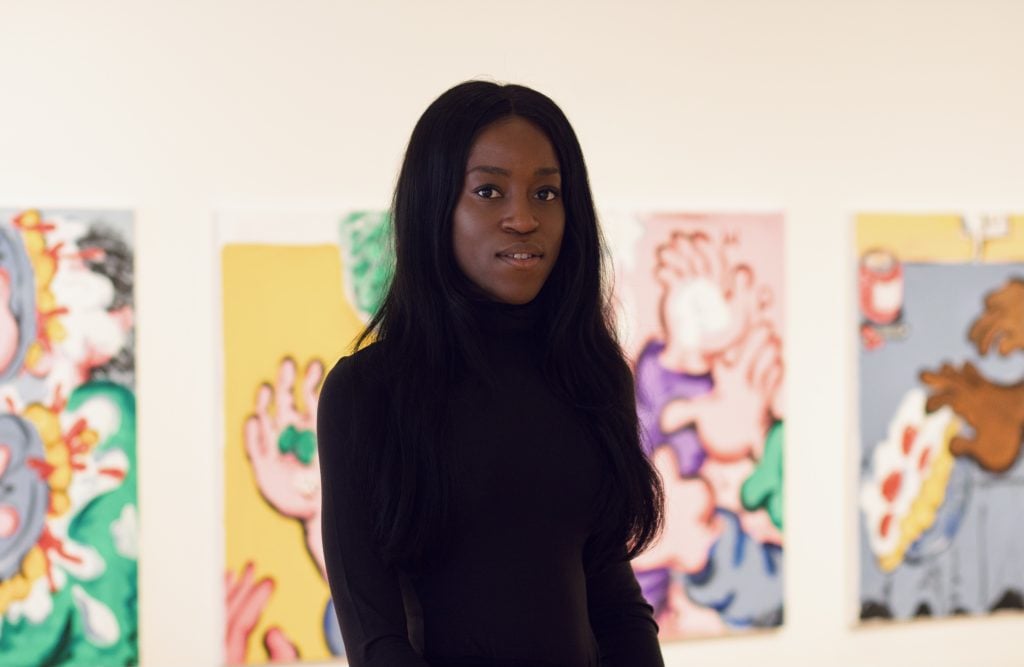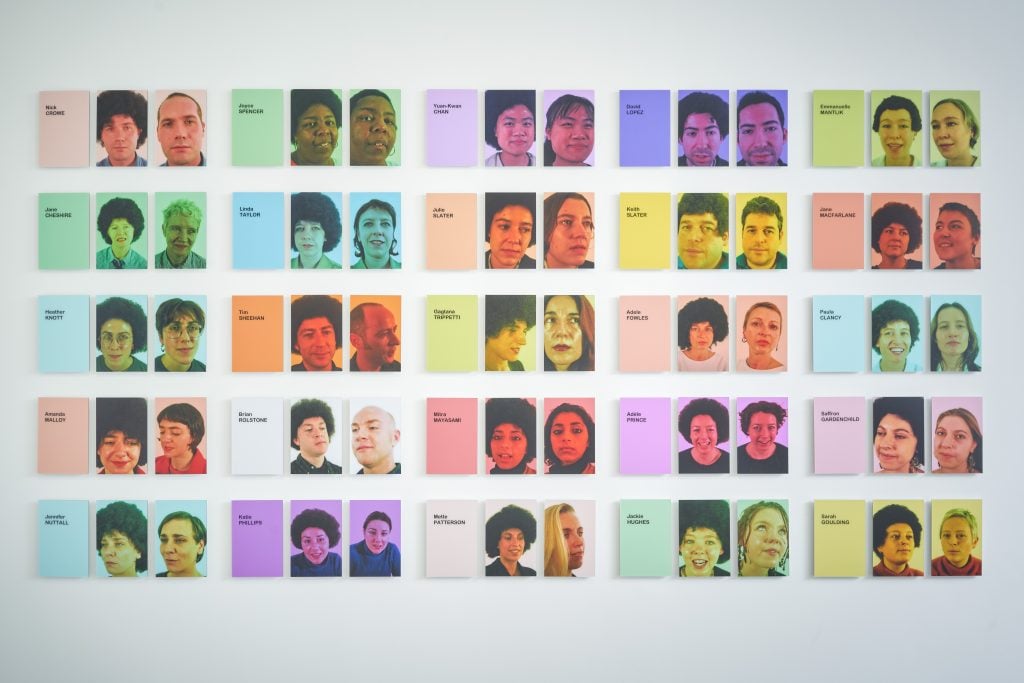Market
‘It’s About Black Art Not Being a Sellable Fad’: How One Curator Is Navigating the Market for a Show of Black British Art at Christie’s London
The exhibition coincides with Frieze London and Black History Month in the U.K.

The exhibition coincides with Frieze London and Black History Month in the U.K.

Naomi Rea

Christie’s will hold an exhibition of Black British art at its London galleries this fall. Curated by Nigerian-British curator Aindrea Emelife, the show will run October 1 through 22, coinciding with Black History month in the U.K., as well as Frieze London.
Titled “Bold, Black, British” the show at Christie’s King Street galleries will explore the legacy and influence of Black British artists over the past 40 years. The 27-year-old curator (and Artnet News contributor) Emelife has selected work by 27 artists who are from, or working in, the U.K, some of which will be available through the house’s private sales arm. (Christie’s declined to disclose prices.)
“In the wake of Black artists breaking records, it is becoming more and more likely to see great Black artists at auction houses,” Emelife said. “But with this exhibition, which has an extensive amount of loans, audio visual work, and installation, I seek to present a fuller picture of the great breadth of talent and expansive legacy of Black British Art.”

Sonia Boyce, The Audition in Colour (1997/2020). ©Sonia Boyce. Courtesy Goodman Gallery.
The cross-generational exhibition promises to trace the history of Black British creativity, beginning with the pioneers of the U.K.’s Black Arts Movement who resisted racism and advocated for their inclusion in the category of “British art” in the 1980s, such as Marlene Smith and Sonia Boyce, who will represent the U.K. at the Venice Biennale next year. Boyce’s The Audition in Colour (1997/2020)—for which the artist invited member of the public to be photographed trying on various afro wigs—is on loan to the exhibition from the Government Art Collection.
There are several established names in the show, including Ibrahim El-Salahi, the celebrated African Modernist Ben Onwonwu, and Samson Kambalu, who has been tapped to create a work for the next Fourth Plinth. But the exhibition also gives an important platform to contemporary rising stars, such as recent art school graduates Emily Moore and Olivia Sterling; Anya Paintsil, whose tapestry works featuring her own hair comment on race and gender; and Sahara Longe, whose revisionist canvases insert Black bodies into the white visual tradition of Old Master painting.
“The exhibition’s primary focus is to highlight and expand on the legacy of Black British art and engage new audiences,” Emelife said. “It’s also about the position of Black art not being a sellable fad, nor a monolith packaged up nicely for the art market. It’s the continuation of a historic legacy that’s always been there whether the art world has accepted it or not.”
One interesting focus will be a room dedicated to video, film, and sound artists, which includes a film by Emmanuel Adjei featuring FKA Twigs, Don’t Judge Me, and an audio and video installation investigating the complexity of identity and heritage by by the polymath artist Julian Knox. “I feel this medium is often not in the forefront of people’s minds when they think of Black art, and so wanted to emphasize [it],” Emelife said.
Reflecting the diverse and cross-disciplinary contributions of Black Britons to the U.K.’s creative landscape, music and fashion will also have their place, including an immersive installation by leading Black British designer Lakwena.

Anya Paintsil, whatever you say squidward (2021), courtesy of the artist/Ed Cross Fine Art.
“Aindrea Emelife’s curation focuses on the substantive legacy and influence of Black British artists, who have often been underrepresented in the cultural landscape of the U.K. and beyond,” Isabel Millar, Christie’s associate specialist in postwar and contemporary art, said in a statement, adding that the show is an “exciting” call for representation and celebration that will be a key element of the house’s programming during Frieze.
The auction house will also run a talks and workshop program alongside the exhibition, including contributions from leading Black British thought leaders.
“The sudden silencing of a global pandemic and one of the largest social justice movements in recent history has raised vital questions that can no longer be negotiated: What is salvageable? Can we rebuild from these foundations?” Emelife said. “I’m looking to find meaning amidst this rupture—actively ushering us towards a transformed reality of the art world that many of us long to inhabit.”